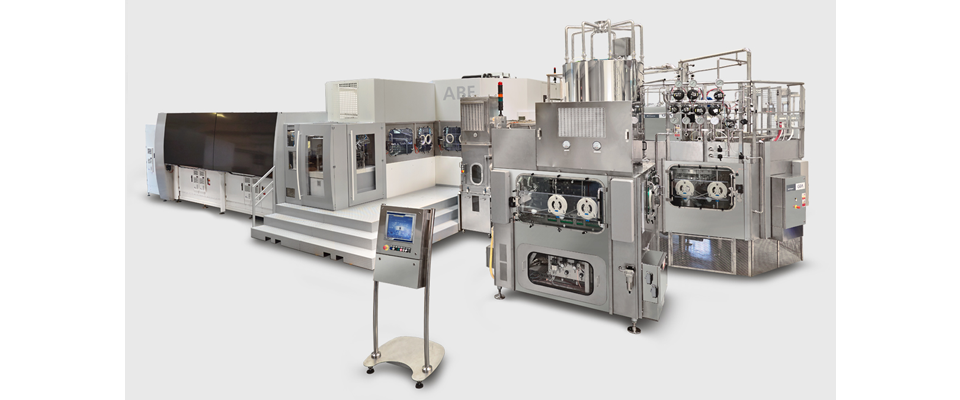Complete control of sterilization performance
The GEA solution is based on an integrated blowing, filling and capping process that runs within a 100% aseptic environment. Thanks to the microbiological isolator, GEA ABF 1.2 aseptically blows preforms that have been previously treated with hydrogen peroxide vapor (VHP). The result is a single zone sterilization process that requires no water and significantly fewer chemicals.
“How do we manage to maintain complete sterility during operations?” says GEA Product Manager Massimo Nascimbeni. “We achieve this by placing the aseptic blowing wheel in the same sterile zone where the filling and capping processes are performed. The newly blown sterile bottles are transferred to the filling and capping carousels without leaving the sterile zone. That’s why we don’t need any unnecessary H2O2 carry-over in the following modules.” Beverage producers can completely monitor and control the preform sterilization process with the unique GEA Smart Sensor™, which checks the spraying performance of each sterilization nozzle just before the preforms are treated. The environmental sterilization process is completely automated requiring no manual intervention from the operator, therefore greatly decreasing any risk of system recontamination.
Future-proofing customers via aseptic technology
GEA is the only supplier in the world today that is able to provide both PAA- and H2O2-based sterilization technologies that are FDA approved. GEA’s latest FDA approval was made easier in part due to its extensive experience in filing FDA projects – its first FDA certification having been awarded more than ten years ago for its PAA-based bottle sterilization platform, and given the number of installation references GEA has in the U.S. without a single bottle claim.
Bellò concludes: “Without a doubt, aseptic technology is the safest and most efficient production system for bottling sensitive beverages without preservatives, which never shies away from comparing costs and benefits. The higher the production volumes, the higher the desired production quality and the higher the need for flexibility in bottle design, the clearer the advantages of aseptic systems become when compared to other solutions. With our ABF 1.2 FDA certification we can finally service customers with VHP based sterilization platforms in the U.S.”






